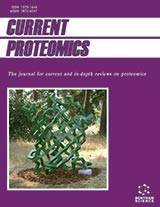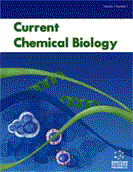Abstract
Benzopyrone derivatives (Coumarins) are well known inhibitors of P-glycoprotein (P-gp) mediated efflux. The high expression level of these efflux proteins promotes the growth of breast cancer stem cells (CSCs). The activity of breast CSCs is directly affected by the inhibition of efflux proteins by benzopyrone derivatives. Ligand based pharmacophoric study and structure based docking studies have been exploited for assessing this inhibitory activity. Based on QSAR results, a three point pharmacophore comprising of one hydrogen bond acceptor (A) and two condensed aromatic groups (R) has been designed. The atom based QSAR study was conducted to predict partial least square (PLS) statistical factors for test and training data sets. Some specific amino acids have been demonstrated to be actively involved in the ligand protein interaction. These structural features of ligands and active site residues of target protein provide new pathways to develop therapeutically important drugs for the inhibition of breast cancer stem cells.
Keywords: Breast cancer stem cells, P-glycoprotein (P-gp), Efflux, Quantitative structure activity relationship (QSAR), Benzopyrones.
Current Bioinformatics
Title:3D-QSAR and Docking Simulation Studies of Some Benzopyrone Derivatives as Inhibitors for Breast Cancer Stem Cell Growth via PGlycoprotein Mediated Efflux
Volume: 11 Issue: 3
Author(s): Anushree Tripathi and Krishna Misra
Affiliation:
Keywords: Breast cancer stem cells, P-glycoprotein (P-gp), Efflux, Quantitative structure activity relationship (QSAR), Benzopyrones.
Abstract: Benzopyrone derivatives (Coumarins) are well known inhibitors of P-glycoprotein (P-gp) mediated efflux. The high expression level of these efflux proteins promotes the growth of breast cancer stem cells (CSCs). The activity of breast CSCs is directly affected by the inhibition of efflux proteins by benzopyrone derivatives. Ligand based pharmacophoric study and structure based docking studies have been exploited for assessing this inhibitory activity. Based on QSAR results, a three point pharmacophore comprising of one hydrogen bond acceptor (A) and two condensed aromatic groups (R) has been designed. The atom based QSAR study was conducted to predict partial least square (PLS) statistical factors for test and training data sets. Some specific amino acids have been demonstrated to be actively involved in the ligand protein interaction. These structural features of ligands and active site residues of target protein provide new pathways to develop therapeutically important drugs for the inhibition of breast cancer stem cells.
Export Options
About this article
Cite this article as:
Tripathi Anushree and Misra Krishna, 3D-QSAR and Docking Simulation Studies of Some Benzopyrone Derivatives as Inhibitors for Breast Cancer Stem Cell Growth via PGlycoprotein Mediated Efflux, Current Bioinformatics 2016; 11 (3) . https://dx.doi.org/10.2174/1574893611999160610125100
| DOI https://dx.doi.org/10.2174/1574893611999160610125100 |
Print ISSN 1574-8936 |
| Publisher Name Bentham Science Publisher |
Online ISSN 2212-392X |
 47
47
- Author Guidelines
- Bentham Author Support Services (BASS)
- Graphical Abstracts
- Fabricating and Stating False Information
- Research Misconduct
- Post Publication Discussions and Corrections
- Publishing Ethics and Rectitude
- Increase Visibility of Your Article
- Archiving Policies
- Peer Review Workflow
- Order Your Article Before Print
- Promote Your Article
- Manuscript Transfer Facility
- Editorial Policies
- Allegations from Whistleblowers
Related Articles
-
Molecular Docking Study of a Series of Substituted Xanthone Derivatives as Novel COX-2 Inhibitors Targeting Prostaglandin Endoperoxide Synthase -2
Current Enzyme Inhibition Tumour Targeting with Systemically Administered Bacteria
Current Gene Therapy Editorial [Hot topic: Microbiota, Innate Immune and Anti-Inflammation (Guest Editor: Jun Sun)]
Anti-Inflammatory & Anti-Allergy Agents in Medicinal Chemistry Sodium Dependent Multivitamin Transporter (SMVT): A Potential Target for Drug Delivery
Current Drug Targets Multifunctional Anti-Cancer Nano-Platforms are Moving to Clinical Trials
Current Drug Metabolism Cancer Prevention and Therapy in a Preclinical Mouse Model: Impact of FHIT Viruses
Current Gene Therapy Breast Cancer in the Personal Genomics Era
Current Genomics Approaching the Increasing Complexity of Non-small Cell Lung Cancer Taxonomy
Current Pharmaceutical Design Update on Statins: Hope for Osteoporotic Fracture Healing Treatment
Current Drug Targets Insights into Targeting NEMO for Pharmacological Regulation
Current Drug Targets Clinical Evidence on the Magnitude of Change in Growth Pathway Activity in Relation to Tamoxifen Resistance is Required
Current Cancer Drug Targets Novel Anthraquinone Derivatives as Dual Inhibitors of Topoisomerase 2 and Casein Kinase 2: In Silico Studies, Synthesis and Biological Evaluation on Leukemic Cell Lines
Anti-Cancer Agents in Medicinal Chemistry Synthesis and Biological Activities of Substituted Benzoxazepine: A Review
Mini-Reviews in Organic Chemistry Cytotoxicity and Toxicity to Animals and Humans of Ribosome-Inactivating Proteins
Mini-Reviews in Medicinal Chemistry Regulatory Requirements for PET Radiopharmaceuticals Production: Is Automation an Answer?
Current Medical Imaging Melanoma
Current Cancer Therapy Reviews Microfluidic Devices for Circulating Tumor Cells Isolation and Subsequent Analysis
Current Pharmaceutical Biotechnology Simultaneous UPLC-MS/MS Determination of 6-mercaptopurine, 6-methylmercaptopurine and 6-thioguanine in Plasma: Application to the Pharmacokinetic Evaluation of Novel Dosage forms in Beagle Dogs
Current Pharmaceutical Design Emerging Endocrine Therapies in the Treatment of HR-Positive Metastatic Breast Cancer
Current Cancer Therapy Reviews Application of 3-methylene- and 3-(monosubstituted)alkylideneoxindoles in the Synthesis of Heterocyclic Compounds
Current Organic Chemistry

















.jpeg)








